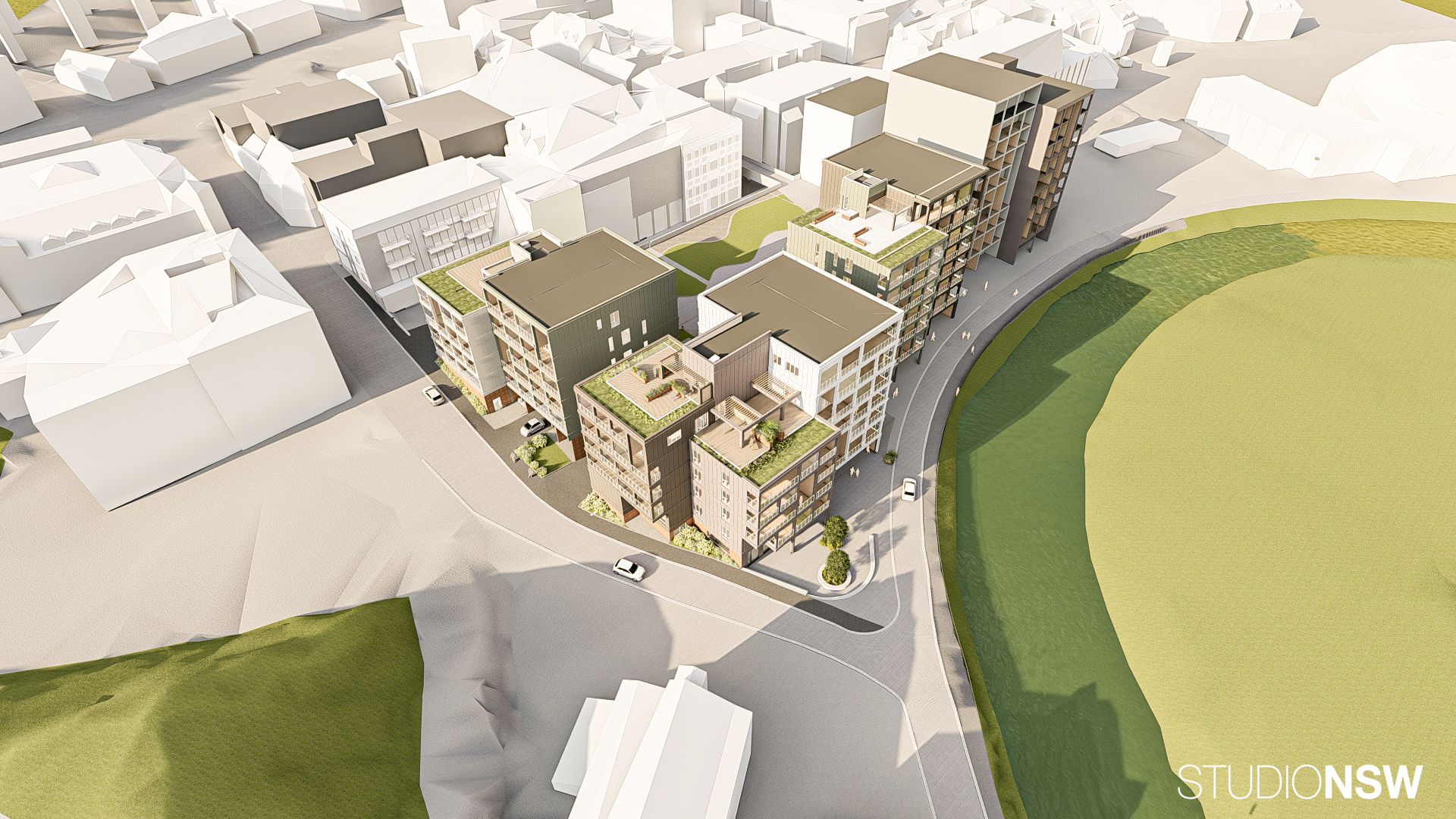
Featured
Résidence Farverikvartalet, Gjøvik (Norvège)
Reference details
- Location Gjøvik, Norway
- Architects NSW Studio
- Technique(s) VMZINC Cassette
- Aspect(s) PIGMENTO Red, AZENGAR, PIGMENTO Brown, PIGMENTO Green, QUARTZ-ZINC
- Application Type Facade
- Copyright Anastasiia Gornostai Photographer
“Farverikvartalet” is a mixed-use residential area built around a vast, landscaped, elevated courtyard on a brownfield site that was once dominated by cars.
Designed by Studio NSW, the development offers 130 homes and a number of shops opening onto a public promenade.
The buildings unfold in a play of differentiated proportions and volumes: variations in height, split roof lines and templates adjusted to the relief offer spatial diversity, generous interiors and openings onto the neighbouring river.
This fragmentation breaks up the scale while maintaining the overall cohesion. The latter is ensured by the materiality of the façades, which is a structuring element of the project.
No fewer than 6,500 m² of QUARTZ-ZINC®, AZENGAR® and PIGMENTO® red, green and brown cassettes create a subtle chromatic envelope, inspired by the local history of the dye works that once stood on the banks of the river.
This colourful register highlights the division of the masses, gives each building its own identity and develops the visual coherence of the district, whose name, “Farverikvartalet”, means “District of Colours”.
Designed by Studio NSW, the development offers 130 homes and a number of shops opening onto a public promenade.

The buildings unfold in a play of differentiated proportions and volumes: variations in height, split roof lines and templates adjusted to the relief offer spatial diversity, generous interiors and openings onto the neighbouring river.
This fragmentation breaks up the scale while maintaining the overall cohesion. The latter is ensured by the materiality of the façades, which is a structuring element of the project.
No fewer than 6,500 m² of QUARTZ-ZINC®, AZENGAR® and PIGMENTO® red, green and brown cassettes create a subtle chromatic envelope, inspired by the local history of the dye works that once stood on the banks of the river.
This colourful register highlights the division of the masses, gives each building its own identity and develops the visual coherence of the district, whose name, “Farverikvartalet”, means “District of Colours”.





